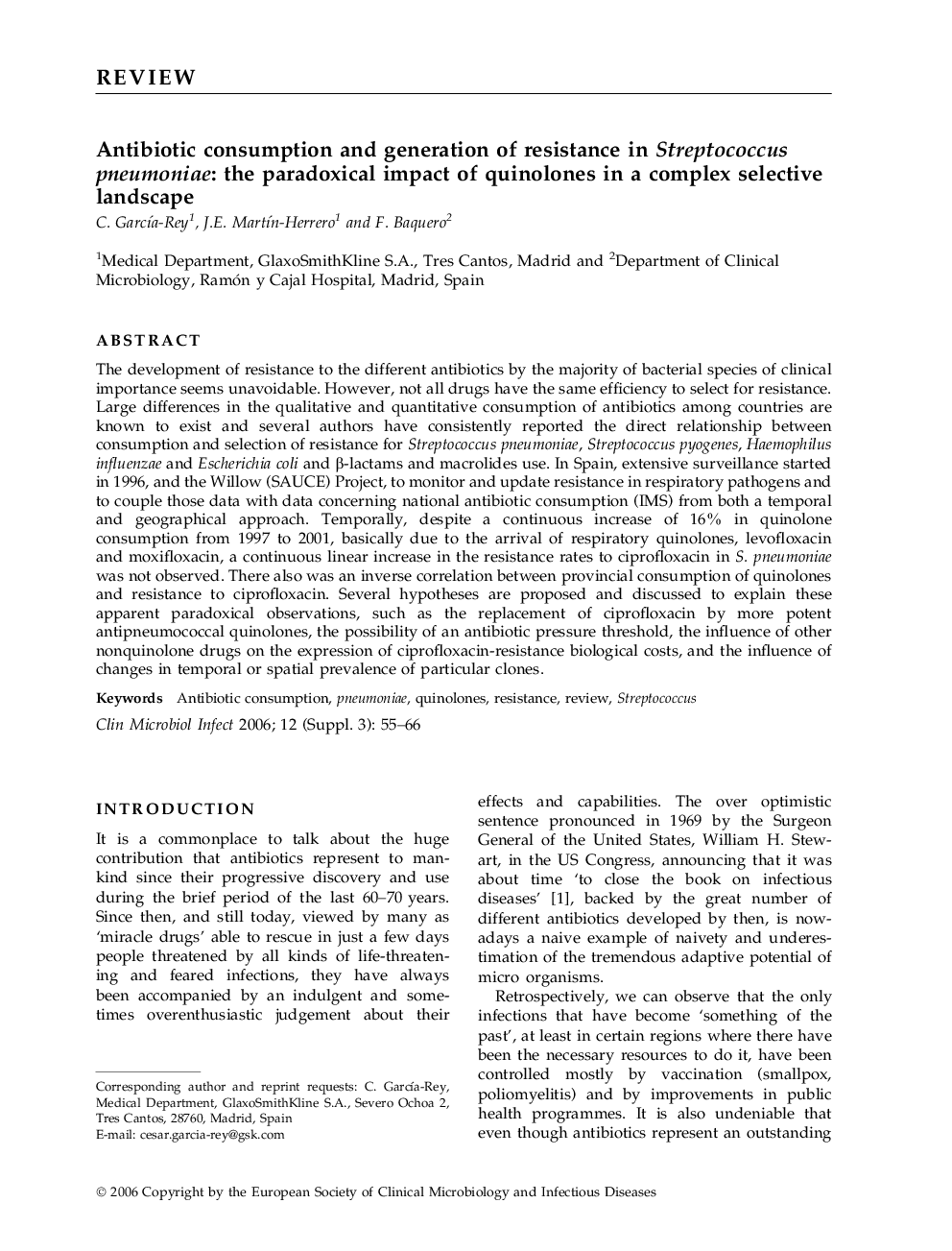| Article ID | Journal | Published Year | Pages | File Type |
|---|---|---|---|---|
| 3399004 | Clinical Microbiology and Infection | 2006 | 12 Pages |
ABSTRACTThe development of resistance to the different antibiotics by the majority of bacterial species of clinical importance seems unavoidable. However, not all drugs have the same efficiency to select for resistance. Large differences in the qualitative and quantitative consumption of antibiotics among countries are known to exist and several authors have consistently reported the direct relationship between consumption and selection of resistance for Streptococcus pneumoniae, Streptococcus pyogenes, Haemophilus influenzae and Escherichia coli and β-lactams and macrolides use. In Spain, extensive surveillance started in 1996, and the Willow (SAUCE) Project, to monitor and update resistance in respiratory pathogens and to couple those data with data concerning national antibiotic consumption (IMS) from both a temporal and geographical approach. Temporally, despite a continuous increase of 16% in quinolone consumption from 1997 to 2001, basically due to the arrival of respiratory quinolones, levofloxacin and moxifloxacin, a continuous linear increase in the resistance rates to ciprofloxacin in S. pneumoniae was not observed. There also was an inverse correlation between provincial consumption of quinolones and resistance to ciprofloxacin. Several hypotheses are proposed and discussed to explain these apparent paradoxical observations, such as the replacement of ciprofloxacin by more potent antipneumococcal quinolones, the possibility of an antibiotic pressure threshold, the influence of other nonquinolone drugs on the expression of ciprofloxacin-resistance biological costs, and the influence of changes in temporal or spatial prevalence of particular clones.
